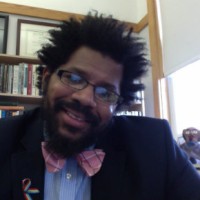The Christian campus in black and white
W. E. B. Du Bois wrote his prophetic words “the problem of the 20th century is the problem of color line” decades before the landmark Brown v. Board of Education ruling. Yet those words allowed blacks to note how the removal of Jim Crow from educational institutions was slow in many parts of the country. Often among those responsible were Christian segregationists in Christian schools and colleges. And while Christian schools and colleges today have sought to promote greater diversity in student numbers, there are few people of color teaching in the classroom and in leadership positions.
In Divided by Faith: Evangelical Religion and the Problem of Race in America, Michael Emerson and Christian Smith examine resistance by white evangelicals toward racial integration as they sought to protect their sense of homogeneity. And Christopher Myers’s White Freedom Schools: The White Academy Movement in Eastern North Carolina, 1954 – 1973 details the growth of segregated independent and Christian schools following the Civil Rights Act of 1964. The number of such schools exploded after 1968, when the Supreme Court demanded absolute integration. By 1970, roughly 500,000 students attended segregated private schools in North Carolina. Many operated from a position that defied integration, often referring to the day of the ruling in the Brown case as “Black Monday.”
The problems that existed for blacks during the 1950s and ’60s are still experienced today. After integration, attitudes at secondary and post-secondary Christian institutions shifted from overt paternalism toward blacks to acute color blindness. Christian institutions continue to operate under a faith-based notion that Jesus does not see color, which is another form of expressing dominant culture beliefs. Since the late 20th century, campuses ignoring the color line have added to the alienation of black students and faculty members.
At the advent of the 20th century, Du Bois exposed the veil of color blindness as it relates to black-American identity with his idea of double consciousness. Du Bois’s premise sheds light on the pretense of a mythical post-racial world on Christian campuses. Black teachers and students today, like those of Du Bois’s time, understand that making whites aware of the talents of black people and their position as a racial group could transform the current norm. But, the lack of black academics on campuses and in positions of leadership in the 21st century means fewer mentors and relevant courses.
The presence of black students on predominantly white Christian campuses has notably increased over the past decade; on many campuses, however, this is not true of black faculty members. There are more than 100 schools in the Council for Christian Colleges and Universities, many of which could be described as evangelical. Historically, some of these institutions were slow and even resistant to integration, such as Abilene Christian University and Harding University, schools affiliated with the Churches of Christ.
Today, some Christian schools and colleges aim to recruit black students, though some in the black community question whether they could fully embrace black identity or address the dilemma of the double consciousness. Christian schools are often conservative, and that ideological disposition is reflected in curricula, guests lectures, political endorsements, and hiring. And black intellectual thought is often at odds with white Christian conservatism.
Peggy McIntosh’s White Privilege: Unpacking the Invisible Knapsack looks at the barriers to white Christian schools serving as change agents. McIntosh notes that “whites are taught to think of their lives as morally neutral, normative, and average, and also ideal.” The fact that white people get upset over topics raised by black people points to a particular discomfort that falls outside the privileged world McIntosh describes. During a 2012 chapel assembly at Wheaton College, white students reacted to a black history ceremony by tweeting racist comments about their peers. In response, campus leadership created what they call the Solidarity Cabinet to engage the community in a healthy intellectual dialogue about race.
Addressing the color line in the 21st century starts in the classroom—by having faculty members who reflect the composition of the student body, and by promoting courses and programs that give a voice to African Americans. Following the civil rights movement of the 1960s, white nonsectarian institutions quickly introduced African-American studies courses and programs. Christian schools, however, responded differently. There was an ideological divide that has shaped the intellectual and social conditioning of blacks and whites on Christian campuses. While many white evangelicals acknowledged their wrongs regarding segregation, they continue to fail to delve fully into issues of race.
Our weekly feature Then and Now harnesses the expertise of American religious historians who care about the cities of God and the cities of humans. It's published in partnership with the Kripke Center of Creighton University and edited by Edward Carson, Beth Shalom Hessel, and John D. Wilsey.





